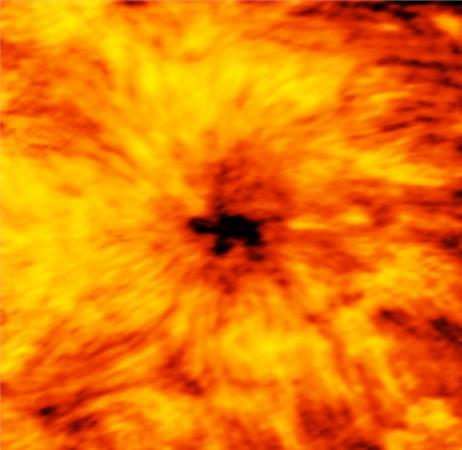
The Atacama Large Millimeter/submillimeter Array (ALMA) radio telescope in Chile has discovered something stunning! A shadowy turtle shape has been spotted in the region just above the Sun's chromosphere!
Also Read: A massive gravitational 'patch' has been found on Venus!
The shape is double the Earth's diameter and was captured at a wavelength of 1.25 millimeters on 18 December 2015. Researchers are hoping they can now use the information to find out more about solar physics.
The ground-based telescope array usually searches for radio waves emitted by distant galaxies. This time, however, it detected waves emitted from the Sun's chromosphere. ALMA observed the radiowaves at 2.5 and 3 millimeter depths in the chromosphere.

"We're accustomed to seeing how our Sun appears in visible light, but that can only tell us so much about the dynamic surface and energetic atmosphere of our nearest star," Tim Bastian, an astronomer at the National Radio Astronomy Observatory in Virginia, stated in an NRAO press release.
"To fully understand the Sun, we need to study it across the entire electromagnetic spectrum, including the millimeter and submillimeter portion that ALMA can observe," Bastian stated further.
According to the European Southern Observatory (ESO), the antennae of ALMA's telescopes were designed in a way that they could 'observe' sunlight. It was the first time ALMA attempted to make a solar observation and measure emissions from our closest star, along with its partner ESO.
Such sunspots are transient features that originate on the Sun's surface when its magnetic field creates a cooler area by deforming the plasma surface. This magnetic activity can also cause a coronal mass ejection, as well as solar flares, leading to unpredictable blasts emanating from the solar surface, which shoot outward.
A major solar flare can emit the equivalent of 1 billion tons of TNT of energy (to put it into perspective, a large solar flare can do 400 times more damage than the comet Shoemaker-Levy 9 did when it crashed into Jupiter...and that was huge).
ALMA usually analyses celestial objects that are far less luminous thaan our Sun. Special procedures were developed by the research team in order to allow the safe imaging of the Sun by ALMA, the media release revealed.
Here's a video showing ALMA's solar-observation potential:

















